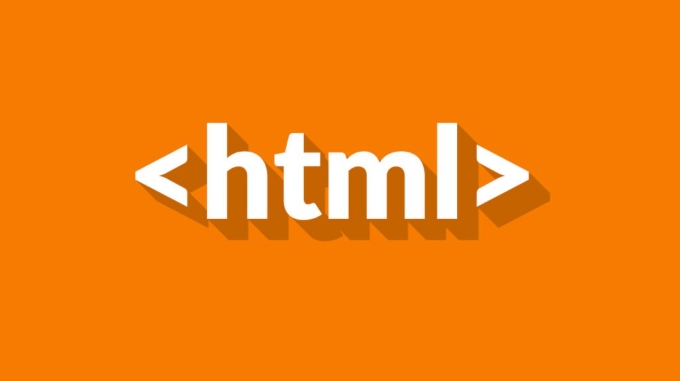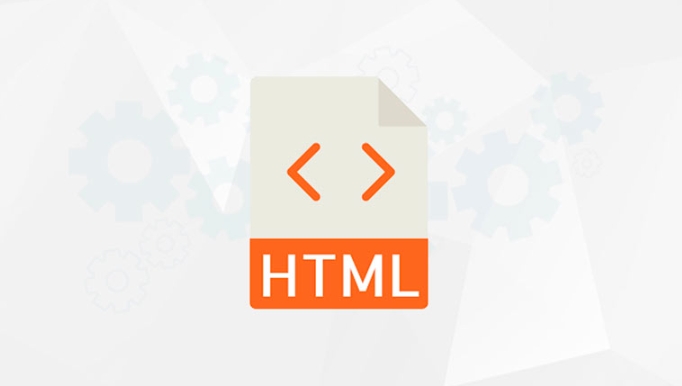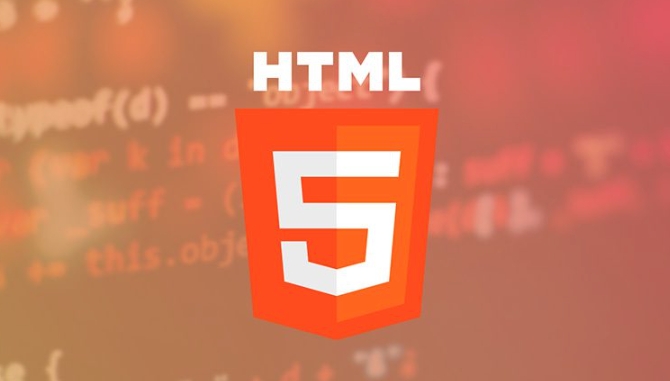Applying the HTML placeholder Attribute to Form Inputs
Jul 04, 2025 am 12:45 AMThe HTML placeholder property is used to display short prompt text in form fields, such as "Enter your email" when entering a mailbox. 1. It is suitable for providing format examples such as date format, username and phone number. 2. Tags should not be replaced to avoid screen readers being unrecognized. 3. Avoid lengthy instructions and keep them concise. 4. Use it with visible tags to ensure that key information is not lost. 5. Pay attention to accessibility and avoid low color contrast or relying on it to convey necessary information. Using placeholder correctly can improve the ease of use of forms.

When you want to give users a quick hint about what they should enter into a form field, the HTML placeholder attribute is a handy tool. It displays a short text inside the input field that disappears when the user starts typing. While it seems simple, there are some important considerations to make sure it's used effectively.

What the placeholder attribute does
The placeholder attribute provides a brief hint or example value for an input field. It's often used in form fields like search bars, email inputs, or name fields. For example:

<input type="text" placeholder="Enter your email">
When this input appears on the page, the text "Enter your email" will show up inside the box, faded or lighter in appearance than normal text. Once the user clicks into the field and starts typing, the placeholder disappears.
This can be useful for giving quick guidance without needing extra labels or toolsets. However, it's not a replacement for proper labeling — more on that later.

When to use placeholder text
Placeholders work best when they offer a simple example or format suggestion. Here are a few good use cases:
- Showing expected date formats:
placeholder="YYYY-MM-DD" - Giving an example of a username format:
placeholder="john_doe123" - Indicating how to structure a phone number:
placeholder="(555) 123-4567"
They're especially helpful when the expected input isn't obvious from the label alone. But again, placeholders shouldn't replace labels entirely. Screen readers may not always read them reliably, which can cause accessibility issues if there's no visible label.
Also, avoid using placeholders as instructions or long explanations. Keep them short and to the point.
Common mistakes with placeholders
A lot of developers fall into a few traps when using placeholders. Here are some common ones:
? Using placeholder text instead of a
<label>
This can confuse users who might forget what the field is for once they start typing.? Putting full sentences or instructions in the placeholder
Something like “Please enter your full name here” is too long and gets cleared as soon as the user types.? Relying on placeholders for critical information
Since placeholder text disappears when the field has content, it's not a good place to put anything essential.
To avoid these pitfalls, always pair placeholders with a visible label, keep the placeholder text short, and don't treat it as the main explanation of what the field is for.
Accessibility tips for placeholder use
Even though placeholders are visual helpers, they need to support accessibility standards too. Here are a few things to consider:
- Make sure each input has a clear associated label using the
<label>tag. - Avoid styling placeholder text too weakly — it should still be readable for users with visual impairments.
- Don't use placeholders alone to convey required formatting; mention it in the label or neary text if needed.
For example:
<label for="phone">Phone Number (format: (555) 123-4567)</label> <input type="text" id="phone" placeholder="(555) 123-4567">
This way, the format is explained even if the placeholder isn't visible anymore.
Using the placeholder attribute well means balancing helpfulness with clarity and accessibility. It's a small feature, but when used right, it makes forms easier to understand at a glance.
Basically that's it.
The above is the detailed content of Applying the HTML placeholder Attribute to Form Inputs. For more information, please follow other related articles on the PHP Chinese website!

Hot AI Tools

Undress AI Tool
Undress images for free

Undresser.AI Undress
AI-powered app for creating realistic nude photos

AI Clothes Remover
Online AI tool for removing clothes from photos.

Clothoff.io
AI clothes remover

Video Face Swap
Swap faces in any video effortlessly with our completely free AI face swap tool!

Hot Article

Hot Tools

Notepad++7.3.1
Easy-to-use and free code editor

SublimeText3 Chinese version
Chinese version, very easy to use

Zend Studio 13.0.1
Powerful PHP integrated development environment

Dreamweaver CS6
Visual web development tools

SublimeText3 Mac version
God-level code editing software (SublimeText3)
 The `` vs. `` in HTML
Jul 19, 2025 am 12:41 AM
The `` vs. `` in HTML
Jul 19, 2025 am 12:41 AM
It is a block-level element, used to divide large block content areas; it is an inline element, suitable for wrapping small segments of text or content fragments. The specific differences are as follows: 1. Exclusively occupy a row, width and height, inner and outer margins can be set, which are often used in layout structures such as headers, sidebars, etc.; 2. Do not wrap lines, only occupy the content width, and are used for local style control such as discoloration, bolding, etc.; 3. In terms of usage scenarios, it is suitable for the layout and structure organization of the overall area, and is used for small-scale style adjustments that do not affect the overall layout; 4. When nesting, it can contain any elements, and block-level elements should not be nested inside.
 Shadow DOM Concepts and HTML Integration
Jul 24, 2025 am 01:39 AM
Shadow DOM Concepts and HTML Integration
Jul 24, 2025 am 01:39 AM
ShadowDOM is a technology used in web component technology to create isolated DOM subtrees. 1. It allows the mount of an independent DOM structure on ordinary HTML elements, with its own styles and behaviors, and does not affect the main document; 2. Created through JavaScript, such as using the attachShadow method and setting the mode to open; 3. When used in combination with HTML, it has three major features: clear structure, style isolation and content projection (slot); 4. Notes include complex debugging, style scope control, performance overhead and framework compatibility issues. In short, ShadowDOM provides native encapsulation capabilities for building reusable and non-polluting UI components.
 Essential HTML Tags for Beginners
Jul 27, 2025 am 03:45 AM
Essential HTML Tags for Beginners
Jul 27, 2025 am 03:45 AM
To get started with HTML quickly, you only need to master a few basic tags to build a web skeleton. 1. The page structure is essential, and, which is the root element, contains meta information, and is the content display area. 2. Use the title. The higher the level, the smaller the number. Use tags to segment the text to avoid skipping the level. 3. The link uses tags and matches the href attributes, and the image uses tags and contains src and alt attributes. 4. The list is divided into unordered lists and ordered lists. Each entry is represented and must be nested in the list. 5. Beginners don’t have to force memorize all tags. It is more efficient to write and check them while you are writing. Master the structure, text, links, pictures and lists to create basic web pages.
 Why is my image not showing up in HTML?
Jul 28, 2025 am 02:08 AM
Why is my image not showing up in HTML?
Jul 28, 2025 am 02:08 AM
Image not displayed is usually caused by a wrong file path, incorrect file name or extension, HTML syntax issues, or browser cache. 1. Make sure that the src path is consistent with the actual location of the file and use the correct relative path; 2. Check whether the file name case and extension match exactly, and verify whether the image can be loaded by directly entering the URL; 3. Check whether the img tag syntax is correct, ensure that there are no redundant characters and the alt attribute value is appropriate; 4. Try to force refresh the page, clear the cache, or use incognito mode to eliminate cache interference. Troubleshooting in this order can solve most HTML image display problems.
 HTML `style` Tag: Inline vs. Internal CSS
Jul 26, 2025 am 07:23 AM
HTML `style` Tag: Inline vs. Internal CSS
Jul 26, 2025 am 07:23 AM
The style placement method needs to be selected according to the scene. 1. Inline is suitable for temporary modification of single elements or dynamic JS control, such as the button color changes with operation; 2. Internal CSS is suitable for projects with few pages and simple structure, which is convenient for centralized management of styles, such as basic style settings of login pages; 3. Priority is given to reuse, maintenance and performance, and it is better to split external link CSS files for large projects.
 Can you put a tag inside another tag?
Jul 27, 2025 am 04:15 AM
Can you put a tag inside another tag?
Jul 27, 2025 am 04:15 AM
?Youcannotnesttagsinsideanothertagbecauseit’sinvalidHTML;browsersautomaticallyclosethefirstbeforeopeningthenext,resultinginseparateparagraphs.?Instead,useinlineelementslike,,orforstylingwithinaparagraph,orblockcontainerslikeortogroupmultipleparagraph
 HTML `link` for Prefetching DNS
Jul 23, 2025 am 02:19 AM
HTML `link` for Prefetching DNS
Jul 23, 2025 am 02:19 AM
Pre-resolving DNS can speed up page loading speed, and using HTML link tags for DNS pre-resolving is an effective method; DNSPrefetching saves subsequent request time by resolving domain names in advance; applicable scenarios include third-party fonts, advertising statistics scripts, resource hosting and CDN domain names; it is recommended to prioritize the main page dependency resources, reasonably control the number between 3 and 5, and use it with preconnect to better effect.
 What is the name attribute in an input tag for?
Jul 27, 2025 am 04:14 AM
What is the name attribute in an input tag for?
Jul 27, 2025 am 04:14 AM
Thenameattributeinaninputtagisusedtoidentifytheinputwhentheformissubmitted;itservesasthekeyinthekey-valuepairsenttotheserver,wheretheuser'sinputisthevalue.1.Whenaformissubmitted,thenameattributebecomesthekeyandtheinputvaluebecomesthevalueinthedatasen






